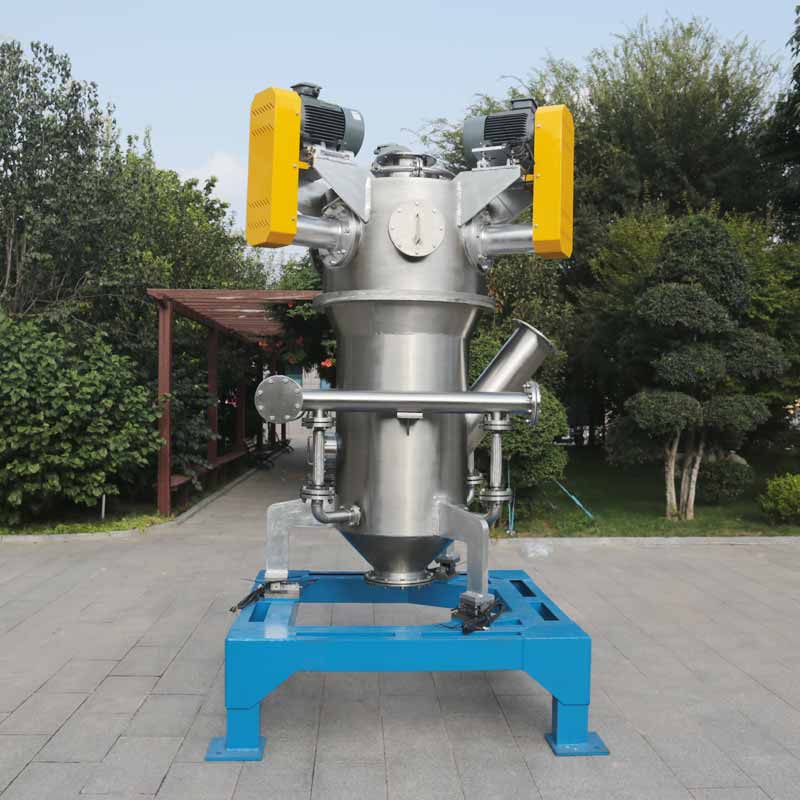Ultra-fine grinding of non-metallic minerals
Non-metallic mines, metal mines, and fuel mines are called the three pillars of the materials industry. The use of non-metallic minerals depends on the degree of deep processing, including ultra-fine grinding, ultra-fine grade, fine purification and surface modification, among which effective ultra-fine grinding is the prerequisite and guarantee for various deep processing. The ideal ultra-fine powder should have the characteristics: particles as small as possible, no agglomeration, narrow particle size distribution, spherical particles as much as possible, uniform chemical composition, etc.
Due to the wide variety of non-metallic minerals, various requirements are put forward on the particle size distribution and purity of crushed products according to their different uses. The development of ultra-fine grinding technology must adapt to its specific requirements. Generally speaking, the requirements for non-metallic minerals are as follows:
- Fineness
The application of non-metallic mineral products requires a certain degree. For example, kaolin and heavy calcium carbonate as papermaking raw materials require a product fineness of -2μm accounting for 90%, whiteness >90%; high-grade paint filler heavy calcium carbonate powder fineness of 1250 Mesh; zirconium silicate as a ceramic opacifier requires an average fineness of 0.5~1μm; wollastonite as a filler also requires its fineness to be less than 10μm and so on.
- Purity
The purity requirement of non-metallic mineral products is also one of its main indicators, which means that no pollution should be allowed during the grinding process, and the original composition should be maintained. If it is white minerals, a certain degree of whiteness is required. For example, the whiteness of calcined kaolin and talc used in papermaking is required to be ≥90%, and the whiteness of heavy calcium carbonate used in papermaking coatings, fillers and high-grade paint fillers is greater than 90%. Wait.
- Powder shape
Some non-metallic mineral products have strict requirements on their shapes to meet different needs. For example, wollastonite used for composite reinforcement, its ultrafine powder is required to maintain its original needle-like crystal state as much as possible, so that wollastonite products become natural short fiber reinforced materials, and its aspect ratio is required to be >8~10.
The application fields of ultra-fine powder materials account for 40.3% in the mechanical field, 34.6% in the thermal field, 12.9% in the electromagnetic field, 8.9% in the biomedical field, 2.4% in the optical field, and 0.9% in other fields.
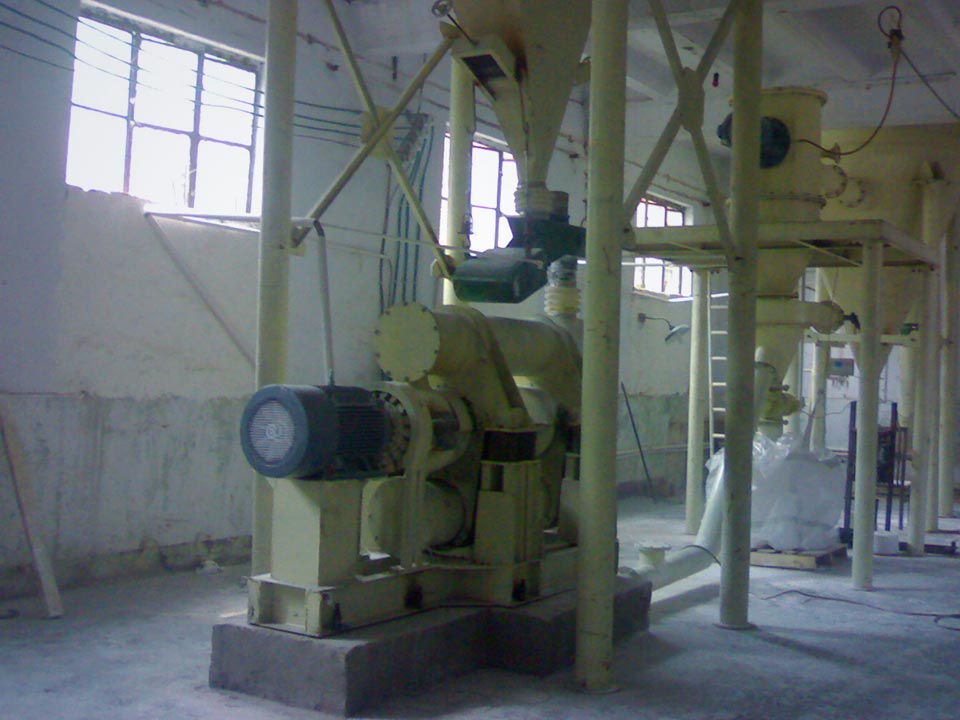
Non-metallic mineral ultra-fine grinding method
Crushing is different from the destruction of a single material. It refers to the effect on the group, that is, the crushed material is a group of particles with different sizes and shapes.
There are two main methods for preparing ultrafine powder from the principle of preparation: one is chemical synthesis; the other is physical grinding. Chemical synthesis is through chemical reaction or phase transformation, the powder is prepared from ions, atoms, and molecules through crystal nucleus formation and crystal growth. Due to the complex production process, high cost, and low yield, the application is limited. The principle of physical grinding is to grind materials through the action of mechanical force. Compared with chemical synthesis methods, physical grinding has lower cost, relatively simple process, and large output.
Advantages of mechanical grinding method: large output, low cost, simple process, etc., and mechanochemical effects are generated during the grinding process to increase the activity of the powder; disadvantages: the purity, fineness and morphology of the product are not as good as the ultra-fine powder prepared by chemical method body. This method is suitable for large-scale industrial production, such as deep processing of mineral products.
Non-metallic mineral ultra-fine grinding equipment
At present, the main method for preparing ultra-fine powder materials is physical grinding. Therefore, ultra-fine grinding equipment mainly refers to various grinding-related equipment that mainly produces ultra-fine powder by mechanical methods. Commonly used ultrafine grinding equipment includes jet mill, mechanical impact mill, vibration mill, stirring mill, colloid mill and ball mill.
| Equipment type | Feeding size/mm | Product fineness d97/μm | Grinding principle |
| Jet mill | <2 | 3~45 | Impact, collision |
| Mechanical impact grinding | <10 | 8~45 | Blow, impact, shear |
| Rotary mill | <30 | 10~45 | Impact, collision, shear, friction |
| Vibration mill | <5 | 2~74 | Friction, collision, shear |
| Stirring mill | <1 | 2~45 | Friction, collision, shear |
| Drum Ball Mill | <5 | 5~74 | Friction, impact |
| Planetary ball mill | <5 | 5~74 | Friction, impact |
| Grinding and peeling machine | <0.2 | 2~20 | Friction, collision, shear |
| Sand mill | <0.2 | 1~20 | Friction, collision, shear |
| Roller mill | <30 | 10~45 | Squeeze, friction |
| High pressure homogenizer | <0.03 | 1~10 | Cavitation, turbulence, shear |
| Colloid mill | <0.2 | 2~20 | Friction, shear |
- High-speed mechanical impact mill
High-speed mechanical impact crusher refers to the use of rotating bodies (rods, hammers, blades, etc.) rotating at a high speed around a horizontal or vertical axis to apply a violent impact on the feedstock, causing it to collide with the fixed body or particles, thereby making An ultra-fine grinding equipment for particle grinding.
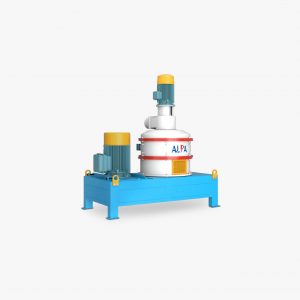
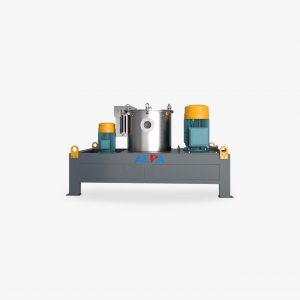
Advantages: large crushing ratio, adjustable fine powder particle size, simple structure, easy operation, less supporting equipment, compact installation, less floor space, large capacity, and high efficiency.
Disadvantages: high-speed operation makes overheating and component wear unavoidable.
It is suitable for the production of superfine powder of medium hardness materials such as calcite, marble, chalk and talc.
- Jet mill
Jet mill is also called jet mill or energy flow mill. It uses the energy of high-speed airflow (300-500m/s) or superheated steam (300-400℃) to cause particles to collide, collide and rub each other, thereby causing solid materials to grind. Mainly include: flat jet mill, circulating jet mill, opposite jet jet mill, rake jet mill, fluidized bed jet mill, etc.
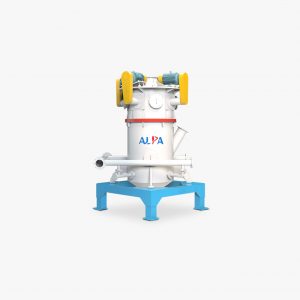
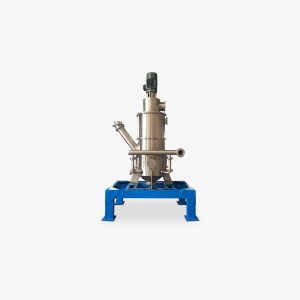
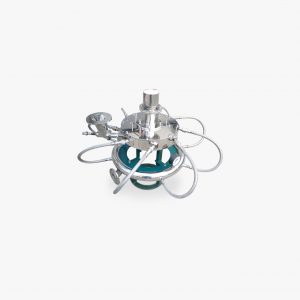
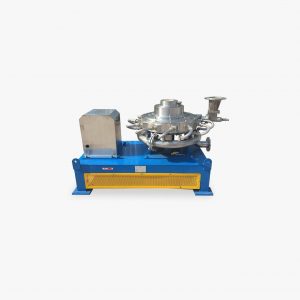
The jet mill pulverization ratio is generally 1-40, and the product fineness d can generally reach 3-10μm. The product is less contaminated and can be operated in a sterile state. It is suitable for pulverizing low-melting and heat-sensitive materials and biologically active products. The production process is continuous, the production capacity is large, and the degree of self-control and automation is high.
Disadvantages: Jet mill is currently the most researched ultrafine grinding equipment with the most complete models and relatively mature technology. It also has the following shortcomings: large-scale, specialized production of high purity, high fineness products, high cost, high energy consumption, The machining accuracy is difficult to reach sub-micron products, and the material is worn out. Jet mills are widely used for ultrafine grinding of non-metallic minerals, chemical raw materials, health foods, rare earths, etc., such as talc, marble, kaolin, and other non-metallic minerals below medium hardness.
Vibration mill is an ultra-fine grinding equipment with a ball or rod as the medium. The processed product can be as fine as a few microns. It is widely used in building materials, metallurgy, chemical industry, ceramics, glass, refractory materials and non-metallic minerals and other industries. Powder processing.
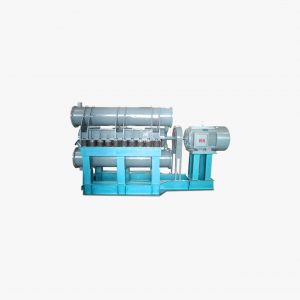
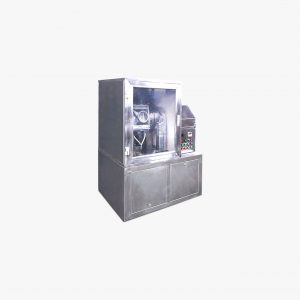
Advantages of vibration mill: compact structure, small size, small quality, simple operation, convenient maintenance, low energy consumption, high output, uniform product size, disadvantages: large noise, large-size vibration mill has high technical requirements for springs, bearings and other machine parts .
The development trend of ultra-fine grinding equipment
(1) Improve product fineness and reduce equipment grinding limit;
(2) Increase the output of a single machine and reduce the energy consumption per unit of product;
(3) Reduce abrasion;
(4) High stability and reliability;
(5) Online control of product fineness and particle size distribution;
(6) Efficient, fine and large grading equipment;
(7) Ultra-fine grinding equipment for special grain and tough materials.
Article source: China Powder Network
Ternary material grinding process and equipment
The ternary material is a secondary sphere formed by agglomeration of single crystals of about 1μm, and the particle size of the secondary sphere is 3-40μm. The mixture of the ternary material precursor and the lithium source is calcined at a high temperature in a sagger, and there is a burning loss rate of more than 24%, so the material is severely compacted, and it is necessary to use a crushing device to break a few centimeters of large materials into a few millimeters. Small pieces, and then use grinding equipment to grind small pieces of a few millimeters into the final product.
One of the important quality indicators of ternary materials is particle size and particle size distribution. Particle size and particle size distribution will affect the specific surface area, tap density, compaction density, processing performance and point chemical properties of the ternary material. Therefore, the particle size and particle size distribution of ternary materials for lithium-ion batteries must be strictly controlled.
The feed size and product size of different crushing equipment are different, and the compacted ternary materials need to be crushed step by step according to the specific conditions of the equipment. The following table is a comparison of the four commonly used equipment of ternary materials.
Comparison table of commonly used crushing equipment for ternary materials
| Grinding equipment | Feeding size/mm | Product size/μm | Common power/kW | Capacity corresponding to power/(kg/h) |
| Jaw crusher | 300~1000 | 2000~20000 | 1.5 | 450 |
| Roller crusher | <200 | 1000~20000 | 2.2 | 500 |
| Jet mill | <3 | 1~50 | 60(including compressed air) | 300 |
| Impact mill | <10 | 1~15 | 12 | 100 |
According to the performance comparison of the four types of equipment, the common grinding process for ternary materials can be designed: Jaw crusher → Roller crusher → Jet mill (Impact mill).
Common ternary material crushing process flow chart
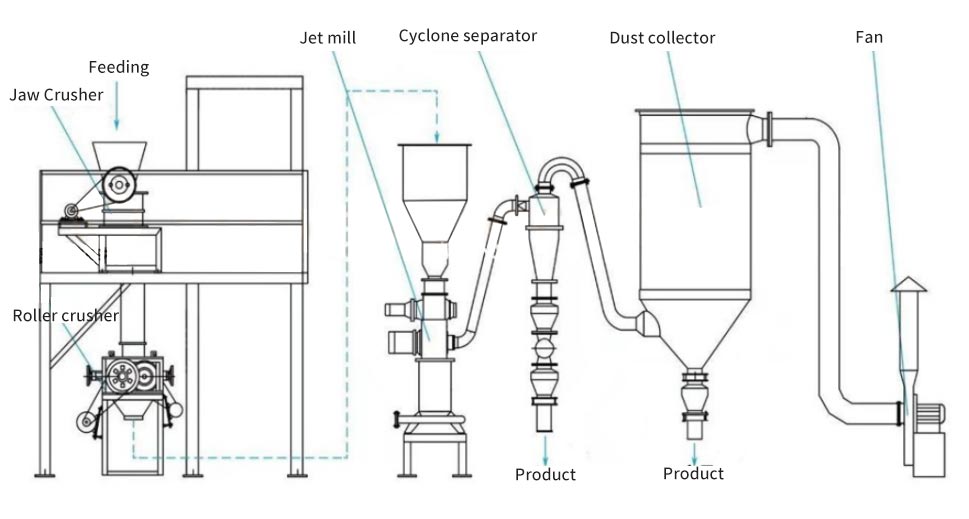
Ternary material crushing equipment
According to the particle size of the crushed product, the crushing equipment can be divided into:
①Coarse crushing equipment, such as jaw crusher, roller crusher, hammer crusher, etc.;
②Fine crushing equipment, such as ball mill, rod mill, etc.;
③Ultra-fine grinding equipment, such as centrifugal mill, stirring mill, jet mill, sand mill and Raymond mill, etc.
According to whether the grinding medium is used or not, it can be divided into:
①There are media grinding equipment, such as ball mills and sand mills;
②Medium-free grinding equipment, such as jet mill, colloid mill, Raymond mill, etc.
Comparison of several common crushing equipment
| Crushing equipment | Crushing mechanism | Feeding size/mm | Product size/μm | Applications |
| Jaw Crusher | Pressure splitting | 300~1000 | 2000~20000 | Coarse and medium crushed hard materials |
| Roller crusher | Pressure | <40 | 1000~20000 | Medium and finely crushed hard and soft materials |
| Ball mill | Grinding, impact | <5 | 20~200 | Coarse and fine grinding of hard materials and corrosive materials |
| Jet mill | Impact, grinding | <2 | 1~30 | Finely grind soft and medium-hard materials |
- Jaw Crusher
The crushing method of the jaw crusher is a curved extrusion type. The motor drives the belt and pulley, and the movable jaw moves up and down through the eccentric shaft. The structure of jaw crusher mainly includes frame, eccentric shaft large pulley, flywheel, movable jaw, side guard, etc.
Advantages: large crushing ratio, uniform product size; simple structure, reliable work; large adjustment range of the material outlet. Disadvantages: There is an idling stroke, which increases non-productive power consumption; when crushing viscous and wet materials, the production capacity will be reduced, and even blockage will occur.
- Roller crusher
The roller crusher is driven by a motor to rotate the rollers according to the relative direction. When crushing the material, the material passes through the roller from the feed port and is crushed by rolling, and the crushed product is discharged from the bottom of the chassis.
Advantages: simple structure, compact and light, low cost, can crush sticky and wet materials. Disadvantages: low production capacity; can not crush large pieces of material, nor should it crush hard materials, it is usually used for medium and fine crushing of medium hard or soft materials.
- Jet mill
The jet mill uses high-speed airflow as the power and carrier, and the airflow bundle formed by compressed air is turned into velocity energy through the nozzle in the pulverizing chamber. The factors that affect the effect of jet milling include the initial particle size of the raw materials, the diameter of the nozzle, the speed of the classifying wheel, the working pressure, and the feed rate.
Jet mills mainly include: horizontal disc jet mills, 0-type circulating tube jet mills, counter-jet jet mills, target jet mills, fluidized bed jet mills and other types.
- Mechanical grinding machine
Low energy consumption: It integrates centrifugal grinding, impact grinding and extrusion grinding, which can save energy up to 40%~50% compared with other types of mechanical grinding machines.
High fineness: equipped with a self-split grading system, product fineness ≥2500 mesh.
Large feeding range: feeding particle size ≤10mm.
Low wear: The wear parts of the grinding and classification part are made of corundum ceramic material, which has a long service life.
Performance comparison of jet grinder and mechanical grinder
| Project | Principle | Structure | Energy consumption | Wear | Production capacity |
| Jet mill | Use compressed gas for power | Simple, with dedicated grinding cavity | High | High | High |
| Mechanical grinding machine
|
Use mechanical energy as power | Install the blade on the movable plate and the fixed plate | Low | Low | Average |
Article source: China Powder Network
Measures to avoid blockage of superfine grinder
The ultra-fine grinder is a fully closed circuit pulverization that reduces the extrusion pressure, increases the roller speed, and combines with the classifier. Jet mills use high-speed airflow to superfine materials. They mainly include horizontal disc jet mills, 0-type circulating tube jet mills, counter-jet jet mills, target jet mills, and fluidized bed air jets mill. The jet mill uses the forms of collision, friction, and shear to achieve ultra-fine pulverization of dry materials. The ultra-fine grinder consists of a cylindrical pulverizing chamber, grinding wheel, grinding rail, fan, material collection system, etc..
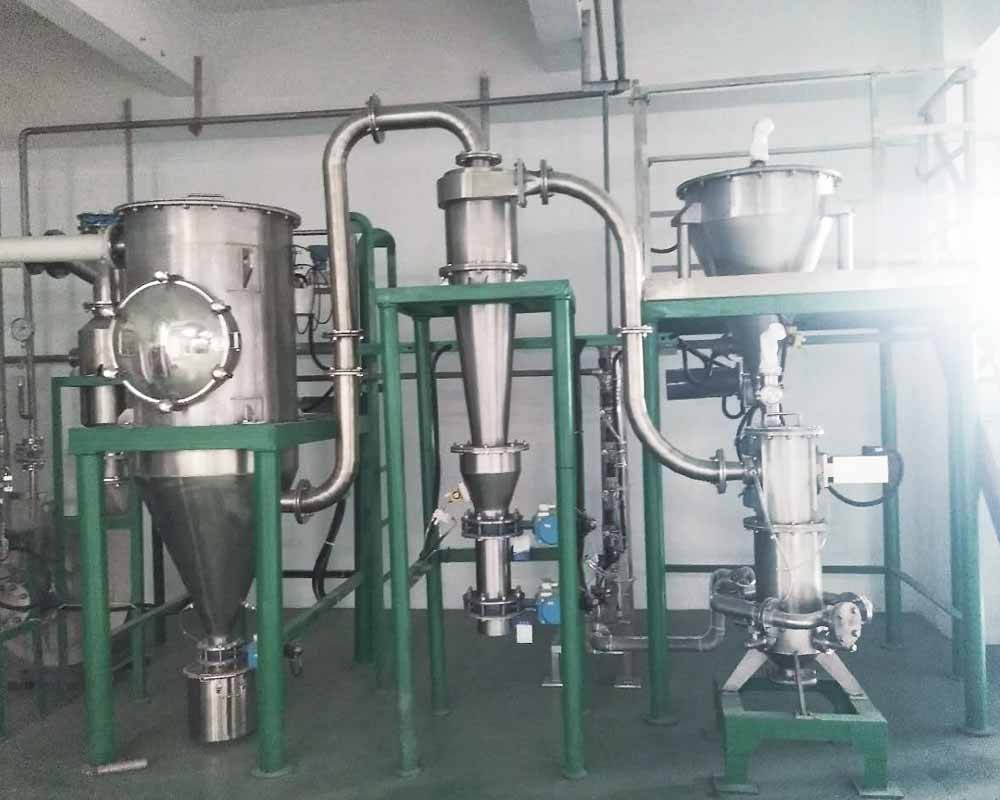
After the compressed air is filtered and dried, it is sprayed into the crushing chamber at high speed through the Laval nozzle. At the intersection of multiple high-pressure airflows, the materials are repeatedly collided, rubbed, and sheared to be crushed. The crushed materials rise with the suction of the fan. The airflow moves to the classification zone. Under the action of the strong centrifugal force generated by the high-speed rotating classification turbine, the coarse and fine materials are separated. The fine particles that meet the particle size requirements are collected by the cyclone separator and dust collector through the classification wheel, and the coarse particles descend to the crushing zone and continue to be crushed. The jet mill has the advantages of high efficiency, low noise, reliable working performance and product quality, safe operation, and low material loss. The jet mill has simple structure, firmness, stable operation and good crushing effect. The inner wall of the casing is processed smoothly, which avoids the phenomenon of rough inner wall and powder accumulation, so that the production of medicine, food and chemical industry can meet the requirements of GMP.
Clogging of the ultra-fine grinder is one of the common faults, mainly caused by improper operation, increased load, and too fast feeding speed. Operate the superfine grinder correctly to prevent clogging.
(1) During the feeding process, always pay attention to the deflection angle of the ammeter pointer. If it exceeds the rated current, it indicates that the motor is overloaded, and the motor will be burnt if overloaded for a long time. Therefore, the current when the pulverizer is working is generally controlled at about 85% of the rated current.
(2) When the feeding speed is too fast, the feeding port should be reduced or closed immediately. You can also control the amount of feeding by adding a feeder to change the feeding method.
(3) Due to the high speed, large load, and large load fluctuation of the ultra-fine grinder, improper matching with the conveying equipment will cause the discharge pipe to weaken or be blocked and there will be no wind, which will cause the tuyere of the ultra-fine grinder to be blocked. Adjust the output volume in time to make the equipment operate normally.
(4) Excessive water content of crushed materials will cause the superfine crusher to block.
(5) Broken and severely aged hammers should be replaced regularly to keep the grinder in good working condition and check the screen regularly, which can not only improve the production efficiency, but also prevent the ultra-micro grinder from clogging and improve the reliability of the grinder.
How to use and maintain the jet mill
The application of jet mill is very wide, and some matters need to be paid attention to when using, including preparation work and operation process before starting up, maintenance work and so on.
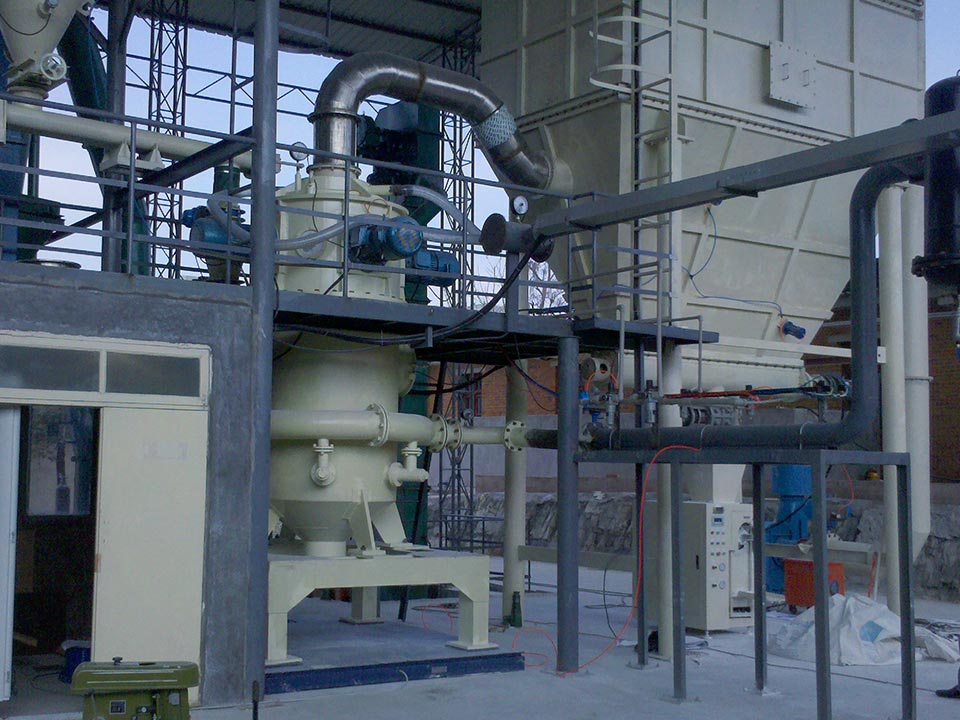
- Preparation before starting
Check whether the host, connecting machine, pipes and valves are in good condition and can work normally.
- Turn on
Boot sequence:
Ensure that the draught fan door is closed, turn on the air compressor, and wait for the compressed air pressure to meet the process requirements. Turn on the sealing gas, turn on the cleaning gas, and turn on the classifier.
Turn on the induced draft fan. After the induced draft fan current drops (40-60 seconds), open the air-regulating door to the opening required by the process. Note that the working current of the induced draft fan motor cannot exceed the rated value.
Turn on the pulse meter, turn on the grinding gas; confirm that the system equipment is working properly, turn on the screw feeder, and add the raw materials. During the production process, raw materials must be supplied and finished products collected in a timely manner.
Shutdown sequence:
Turn off the screw feeder and wait one minute for the next step.
Turn off the grinding gas. Turn off the induced draft fan. Turn off the classifier. Turn off the purge gas. Turn off the sealing gas. Turn off the pulse meter.
- Maintenance
(1) The motor should be lubricated regularly, but the lubricating oil should not be excessive to avoid excessive bearing temperature.
(2) It is important to check the wear of the impeller, screw conveyor and crushing nozzle.
(3) After the material is crushed, the rubber powder in the machine should be cleaned to avoid clogging, thereby affecting the crushing effect.
(4) After a period of use, the filter bag should be cleaned or replaced.
- Matters needing attention
(1) The host equipment and electric control cabinet must be strictly grounded.
(2) The filter element of the dust collector should be in a dry state. If the material discharged by the induced draft fan is found, the filter element should be checked and repaired or replaced in time, and the pneumatic components such as the pulse valve should be checked. If there is a fault, please repair or replace it in time.
(3) The auxiliary air source must be dried and purified to remove moisture and impurities in the air.
(4) Before starting the induced draft fan, the air regulating valve should be closed and fixed. After starting, it should be opened gradually until the required working condition is reached, but the rated current of the motor should not be exceeded.
(5) Before opening the classifier, the sealing gas and cleaning gas must be opened (the pressure of the gas source must be sufficient).
(6) Before starting the machine, check whether there is any debris in the rotor of the grading wheel, and remove it if there is any, so as to prevent the rotor from being unbalanced and damaging the rotor.
(7) The operation room is ventilated, and the operator takes necessary dust-proof measures.
(8) To keep the system unblocked, it is strictly forbidden to block the operation, and regularly check and clean the adhering materials inside the crusher.
Understand lithium carbonate and its applications
Lithium carbonate, an inorganic compound with the chemical formula Li2CO3, is a colorless monoclinic crystal or white powder. Density 2.11g/cm3, soluble in dilute acid, slightly soluble in water, solubility in cold water is greater than hot water, insoluble in alcohol and acetone.
Lithium carbonate is an important source for the preparation of various high-end physical products. According to factors such as processing difficulty, technological level and technical content, it can be divided into basic lithium products and high-end lithium products. Basic lithium products mainly include industrial-grade lithium carbonate and industrial-grade lithium hydroxide; high-end lithium products mainly include battery-grade lithium hydroxide, battery-grade lithium carbonate, pharmaceutical-grade lithium carbonate, and high-purity lithium carbonate.
Raw material of lithium carbonate
There are two main types of lithium in nature. About 70% of the world's lithium exists in salt lakes, and about 30% comes from ore. According to USGS statistics, the world's proven lithium reserves exceed 13.519 million tons (lithium metal); while the resources are as high as 39.78 million tons, equivalent to 210 million tons of lithium carbonate.
Lithium carbonate in the industry mainly refers to lithium ions and lithium ore. Lithium ions mainly exist in salt lake brine, underground brine and sea water. Lithium ore mainly refers to spodumene ore, spodumene, and lepidolite ore. The content of lithium in the earth's crust is about 0.0065%, mainly distributed in South America, North America, Asia, Oceania and Africa.
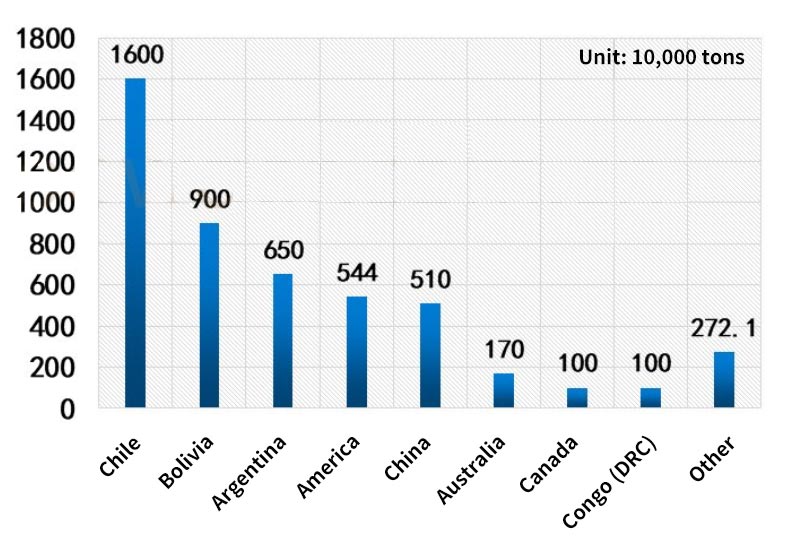
The top five countries with reserves of lithium resources account for 33.02% in Chile, 18.57% in Bolivia, 13.42% in Argentina, 11.23% in the United States, and 10.52% in China.
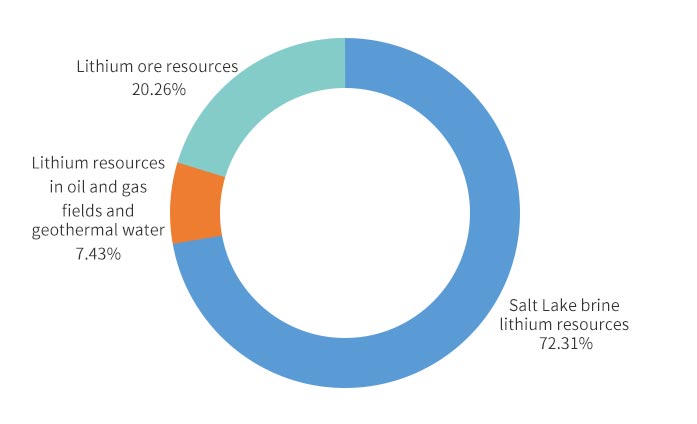
The global output of lithium mines is mainly contributed by Chile and Australia. The output of the two reached 26,300 tons in 2016, accounting for 75.14% of the total global output.
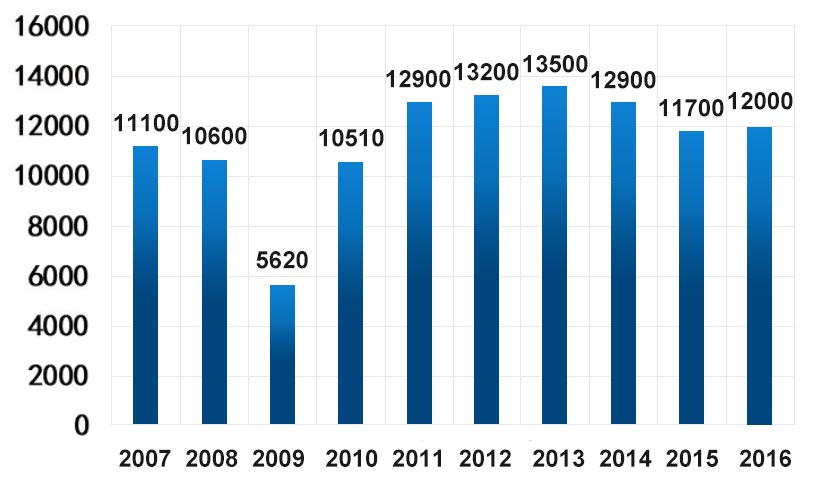
China's lithium production is relatively low, but it is the largest consumer of lithium. It mainly imports most of the required lithium resources from Australia. Australia's lithium mine output in the past ten years is as follows (unit: ton):
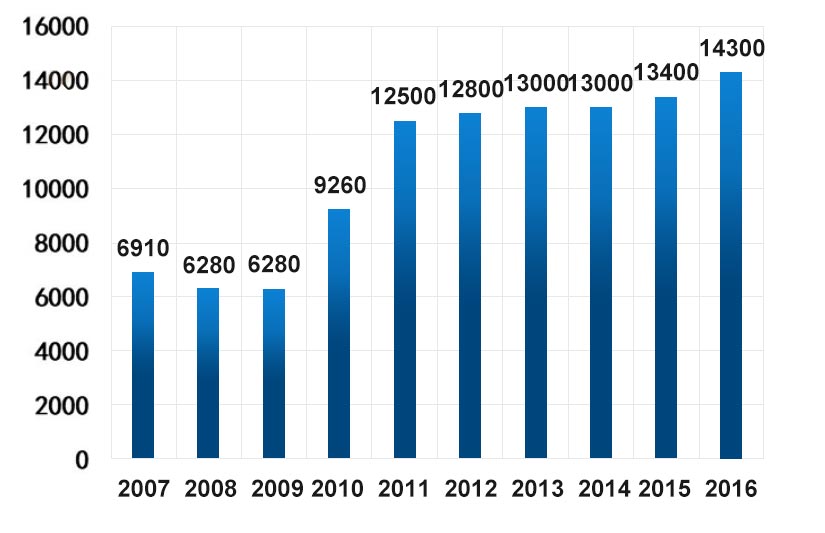
According to data released by the U.S. Geological Survey in 2015, China's proven lithium resource reserves account for about 13% of the world's total proven reserves. Among them, salt lake resources account for about 85% of the country's total reserves, and ore resources account for about 15%. China's lithium resources are mainly distributed in Qinghai. Tibet, Xinjiang, Sichuan, Jiangxi, Hunan and other provinces. Tibet and Qinghai are of salt lake brine type, while Xinjiang, Sichuan, Jiangxi and Hunan are of granite pegmatite or granite mineral type.
The preparation methods of lithium carbonate are mainly divided into two categories: ore lithium extraction method and salt lake brine method. Lithium extraction methods from ore mainly include limestone roasting, sulfuric acid method, and sulfate method. Salt lake brine methods mainly include powder adsorption method, solar pond concentration, solvent extraction method, calcining leaching method, and evaporation precipitation method.
Lithium Carbonate Application and Market
- Glass field
In glass manufacturing, lithium carbonate is mainly used in the production process of cathode picture tubes, heat-resistant glass, glass fiber and optical glass. Lithium carbonate can not only reduce the maturation and melting temperature of the glass, increase the density and strength of the glass, but also improve the viscosity and thermal expansion of the glass and many other important properties.

- Ceramics field
In the ceramic manufacturing process, adding an appropriate amount of lithium carbonate can not only increase the transparency and wear resistance of the product, but also reduce the expansion coefficient and melting temperature, thereby reducing fuel consumption and extending the life of the furnace.

- Medicine field
In the field of medicine, lithium carbonate can be used as a sleeping pill and tranquilizer, as well as anorexia nervosa, torticollis, arthritis, epilepsy, etc., and has become the drug of choice for mania.
- Non-ferrous metals
In the aluminum smelting industry, carbon materials containing 0.4% to 1.5% lithium carbonate are used as anodes instead of ordinary activated carbon materials, which can save 300 to 600 kW·h of electricity per ton of aluminum produced.
- Electrode material
Lithium carbonate is the most important product in lithium compounds. It is the main raw material for preparing metal Li, LiOH, LiBr, etc., not only for lithium ion batteries, but also for surface elastic wave component materials, lithium tantalate and lithium niobate.
Lithium carbonate is an indispensable industrial raw material. The downstream applications are: ceramics & glass 31%, batteries 23%, grease 9%, aluminum smelting 6%, refrigerant 6%, castings 4%, rubber 4%, pharmaceuticals 2%, the other 15%.
Article source: China Powder Network
Classification and working principle of jet mill
Jet mill, as one of the ultrafine grinding equipment, is also one of the important equipment in the grinding industry. After the compressed air of the fluidized bed pulverizer is frozen, filtered and dried, it forms a supersonic airflow through the nozzles and is injected into the pulverizing chamber to fluidize the material. The accelerated material merges at the intersection of the jet airflows of several nozzles, resulting in violent The collision, friction and shearing of the particles can achieve ultra-fine grinding of the particles.
The ground material is transported to the impeller classification area by the rising airflow. Under the action of the centrifugal force of the classification wheel and the suction force of the fan, the coarse and fine powder are separated. The airflow enters the cyclone separator, the fine dust is collected by the bag filter, and the purified gas is discharged by the induced draft fan. The flat jet mill has a wide range of applications due to its simple structure and easy manufacturing.
Structure: It is mainly composed of crushing chamber, nozzle opening, discharge opening, air flow outlet, compressed air inlet, classification zone, etc.
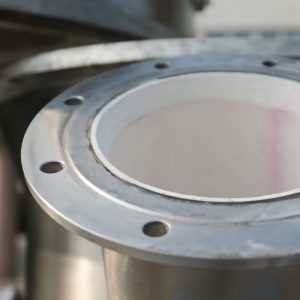
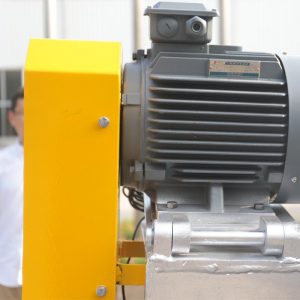
Working principle: The compressed air or superheated steam is transformed into high-speed air flow through the nozzle. When the material is sent into the crushing chamber through the feeder, it is sheared by the high-speed air flow. The strong impact and intense friction make the material grind into ultra-fine products. It is widely used in ultrafine grinding of non-metallic minerals and chemical raw materials. The particle limit of the product depends on the solids content in the confluent gas stream. Under the opposite ratio of unit energy consumption, the products produced by jet mill are more refined, particle size distribution is more uniform, activity is also greater, and the dispersion performance is better than the price. Due to the Joule-Thomson cooling effect caused by the adiabatic expansion of the compressed gas during the grinding process, some low-melting or heat-sensitive materials can be used in the grinding process.
The classification of jet mills currently has the following five types in the industry. They can be divided into horizontal disc (flat) jet mills, circulating tube jet mills, target jet mills, counter jet jet mills and fluidized bed jet mills.



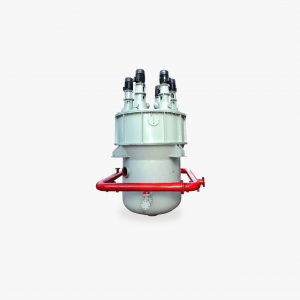
The principle of airflow grinding: dry oil-free compressed airflow or too many nozzles, high-speed jet drives the material to move at a high speed, causing the material to collide, rub and compress. The crushed material reaches the classification area with the airflow, and the material that meets the fineness requirements is finally collected by the collector . If the material does not meet the required particle size, return to the crushing chamber, continue grinding until the required fineness is reached, and stop setting. Due to the high velocity gradient near the nozzle, most of the grinding occurs near the nozzle. In the crushing chamber, the collision frequency of particles and particles is much higher than the collision frequency of particles and the device wall. In other words, the main grinding effect of jet mill is the collision or friction between particles.
Application status and prospect of jet mill
Jet mill, also known as jet mill, refers to the equipment that uses the energy of high-speed airflow (300~500m/s) or superheated steam (300~400℃) to make particles collide, collide and rub each other to achieve ultrafine grinding. Compared with other types of shredders, it has the following advantages:
① Good product granularity. The average particle size (d50) of the material is generally below 5μm, and the particle size distribution is narrow. ②The product has high purity, especially suitable for the grinding of materials that are not allowed to be contaminated, such as medicines. ③It can crush low melting point and heat sensitive materials. ④The product has high particle activity. ⑤The production process is continuous and the production capacity is large.
Jet mills also have some shortcomings, such as: high equipment manufacturing costs, high energy consumption, and large processing costs; single machine processing capacity is poor, not suitable for large-scale production; product particle size is difficult to reach sub-micron level, when it is below 10μm The output has dropped drastically, and the processing cost has risen sharply.
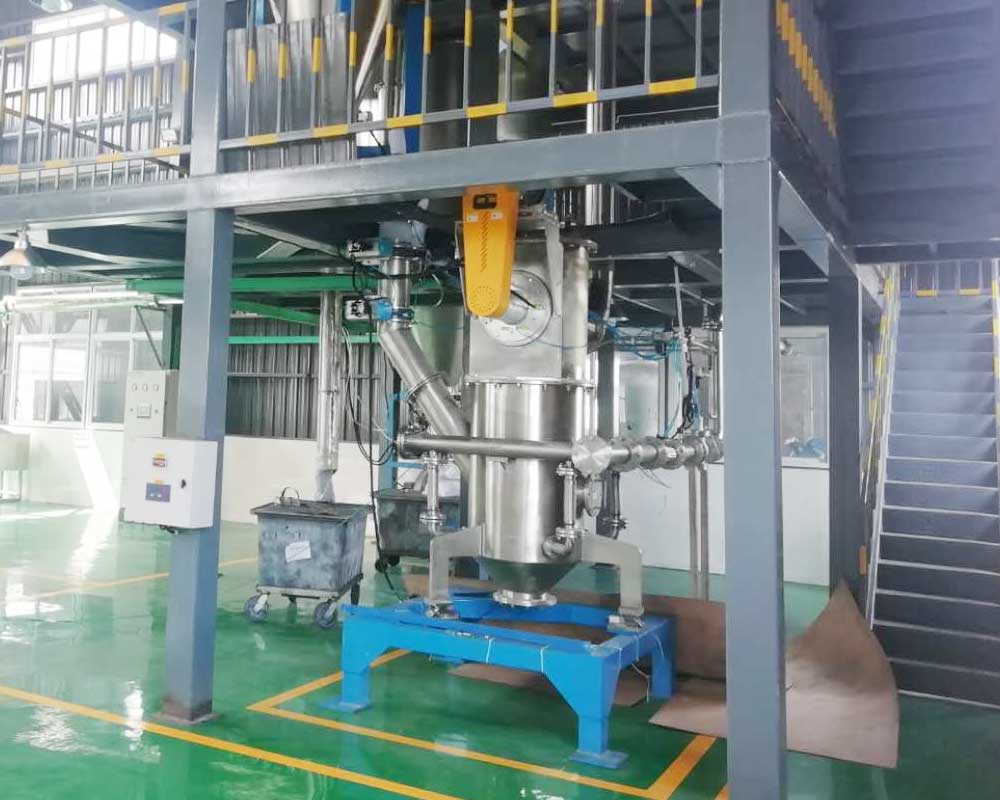
Ultrafine powder technology is an emerging technology. According to the depth of powder processing technology and the changes in powder physical and chemical properties and application performance, the powder with a particle size of less than 10μm is usually called ultrafine powder.
The development of modern engineering technology requires many raw materials and products in powder form. For example, in the military, aerospace, aerospace, and electronic fields, the use of ultrafine powder can be used to make stealth materials; in the chemical industry, the ultrafine catalyst can increase the rate of petroleum cracking by 1 to 5 times; after the ultrafine grinding of drugs, the The surface energy is greatly increased, which improves the effectiveness of the medicine and is beneficial to the absorption of the human body.
Ultra-fine grinding equipment can be divided into different grinding methods: mechanical impact mill, vibration mill, jet mill, stirring mill, etc.
Application status of several ultra-fine jet milling equipment at present
(1) Collision jet mill
This kind of jet milling equipment is also often referred to as a counter-jet jet mill. It uses two high-speed airflows to entrain the particles to be crushed to collide with each other to achieve the grinding effect. It has a high energy utilization rate. It can effectively prevent the jet mill from being damaged due to high-speed impact and can solve the problem of being contaminated by grinding particles.
The advantages of this equipment are mainly reflected in: fast crushing speed, strong impact force, low energy consumption and so on.
(2) Flat jet mill
An early-developed jet mill is a device that uses the collision, shear and friction between particles and the inner wall of the crushing chamber to achieve grinding. Its main component is a disc crushing chamber, several (6-24) high-pressure working fluid nozzles, jet feeders, finished product traps, etc. arranged on the spray ring at a certain angle to the plane of the crushing chamber.
This model is simple in structure, easy to operate, and has a self-classification function, which is especially suitable for the crushing of brittle and soft materials. The outstanding shortcoming is that the grinding cavity is severely worn, which causes certain pollution to the product, and the limit particle size is relatively high.
(3) Fluidized bed jet mill
The working principle of this kind of pulverizing equipment is: adding materials to the pulverizing equipment, using two-dimensional setting of multiple nozzles to spray the impact energy, and the suspension and tumbling collision and friction generated after the expansion of the airflow to achieve the pulverizing effect. The upper airflow near the junction is graded by the grading device at the top under the influence of the negative pressure airflow, and the fine powder is discharged. The coarse powder will be affected by gravity and return to the crushing area to be crushed again.
The advantages of this equipment are mainly reflected in the good dispersion effect, the product size can be adjusted by the classifier, and the wear and energy consumption are relatively small, which is more suitable for large-scale industrial production.
(4) Impact ring jet mill
Replacing the fixed impact component with a rotatable impact ring can avoid the local wear caused by high-speed airflow or gas-solid flow in the previous two types of jet mills under the influence of continuous impact on a fixed position, prompting all positions on the overall ring surface Acting as the impacted surface in turn, the overall annular surface will be subjected to relatively close impact wear, which can promote the life of the impact ring to be extended as much as possible.
The main advantage of this equipment is that the direction of movement of the impact ring is opposite to the jet flow, so the relative speed can be increased, which helps to enhance the grinding effect.
(5) Circulating jet mill
JOM circulating jet mill is mainly composed of O-shaped circulating tube, high-pressure working fluid nozzle, venturi tube and feeding ejector. After the material enters the circulating pipe, the material is ground through friction and collision between the particles and the pipe wall.
Although this model is small in size and large in production capacity, it has serious wear on the pipe wall and is not suitable for grinding materials with high hardness and high purity. It usually requires the use of super hard and high wear-resistant materials (corundum, super hard alloy, etc.) ) As a lining.
The development trend of ultra-fine jet milling equipment in the future
At present, the research and development and manufacturing of ultra-fine jet milling equipment have been greatly developed, and have made important contributions to the powder industry, but there are few large-scale, specialized, high-purity, ultra-fine products that can be produced.
(1) Strengthen basic theoretical research and optimize process flow
Strengthen basic theoretical research to guide independent innovation and development of equipment, and on the basis of existing equipment, vigorously develop research on process optimization and optimize process flow. For mass-produced powders, special models can be developed in a targeted manner.
(2) Increase the output of a single machine and reduce the energy consumption per unit of product
With the increasing market demand for ultrafine powder products, especially the increase in large-scale users and the increasing requirements for product quality stability, the market demand for large-scale equipment continues to rise. Large-scale equipment can more effectively adapt to the development trend of gradual expansion of ultra-fine powder processing, and it also has many advantages such as low energy consumption per unit product, excellent product quality stability, and convenient management.
Performance advantages of metal powder air classifier
Metal powder airflow classifiers are widely used in ore dressing plants. They are combined with ball mills to form a closed loop and split-flow ore sand, or used in gravity concentrators to classify ore and fine mud, and to classify ore slurry and wash ore in the metal beneficiation process. Desliming, dewatering and other operations in operation. The machine has the characteristics of simple structure, reliable work and convenient operation.
The metal powder air classifier is a kind of air classifier. The classifier, cyclone separator, dust collector and induced draft fan form a set of classification system. Under the action of fan suction, the material moves to the classification area at high speed from the lower inlet of the classifier along with the updraft. Under the strong centrifugal force generated by the high-speed rotating classification turbine, the coarse and fine materials are separated, and the fine particles that meet the particle size requirements are classified. The gap between the wheel blades enters the cyclone separator or the dust collector to collect, the coarse particles entrained by the part of the fine particles hit the wall and the speed disappears, and they descend along the cylinder wall to the secondary air outlet. After the strong elutriation of the secondary air, the coarse and fine particles are separated. The particles rise to the classification zone for secondary classification, and the coarse particles fall to the discharge port for discharge.
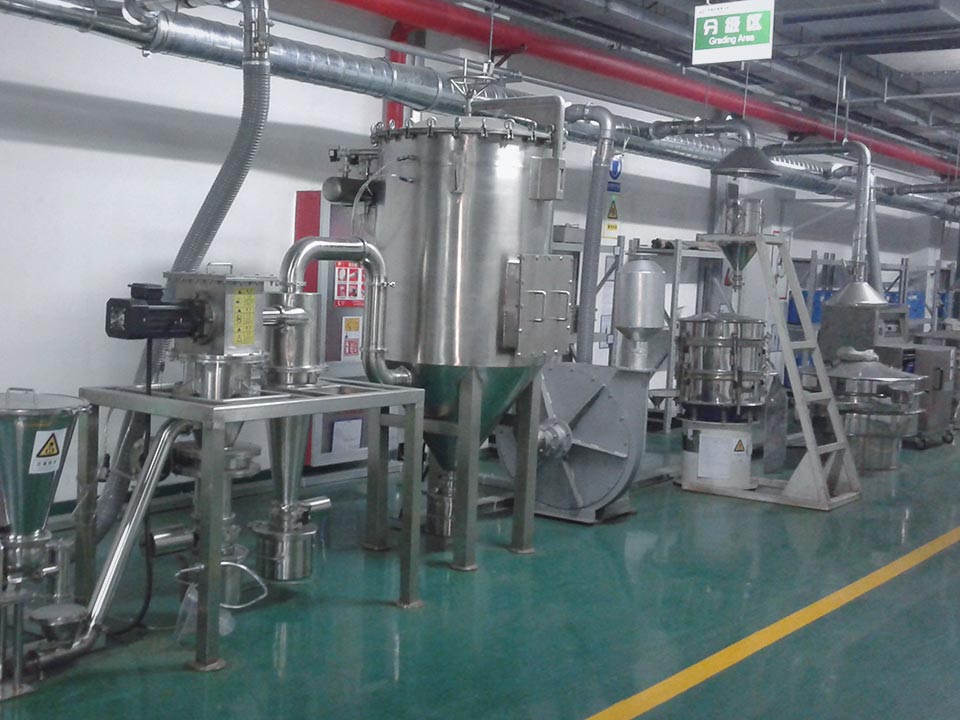
Performance advantages and characteristics of metal powder air classifier:
The metal powder airflow classifier is a perfect combination of self-split inertial classification technology and centrifugal classification technology. Its core technology has reached the world's advanced level, and its technical performance is greatly improved compared to turbo classifiers.
- Low energy consumption: the same processing capacity, energy consumption is 50% lower than other horizontal and vertical classifiers.
- High efficiency: the same processing capacity, the classification efficiency is 50% higher than other horizontal and vertical classifiers.
- High precision: high grading fineness, completely eliminates oversized particles and sieve residues in the product.
- Low rotation speed: the rotation speed of the classification wheel is 50% lower than other horizontal and vertical classifiers for the same classification particle size. When producing powder with a Mohs hardness of 5, the grading wheel has no wear; when producing powders with a Mohs hardness ≥ 7, the service life of the grading wheel is 5 to 8 times longer than that of other horizontal and vertical types.
- High output: the output of mainframe can reach 50t/h.
- Reasonable structure: a dedicated hierarchical structure can be configured according to different special requirements.
- It can be combined with ball mill, Raymond mill, impact mill, jet mill and other grinding equipment to form a closed circuit or open circuit system.
- Negative pressure production, no dust pollution, excellent environment.
- High degree of automation, strong stability and easy operation. All impeller classifiers at all levels adopt electronic frequency modulation and stepless speed regulation. Electronic control and automatic dust removal are realized in the automatic circulation multi-box dust collection process, which improves the stability of the negative pressure of the whole machine.
How to choose the right impact mill
After the material enters the valve body from the inlet at the bottom of the impact mill valve body, it will be quickly scattered on the rotor by a hammer, spread around the stator, and enter the crushing area composed of the rotor and the stator. The rotor rotates at a high speed and generates a large amount of air vortex. Under the dual action of air vortex and centrifugal force, the materials not only collide with each other, but also shear and grind between the rotor and the stator to achieve ultra-fine crushing of the materials.
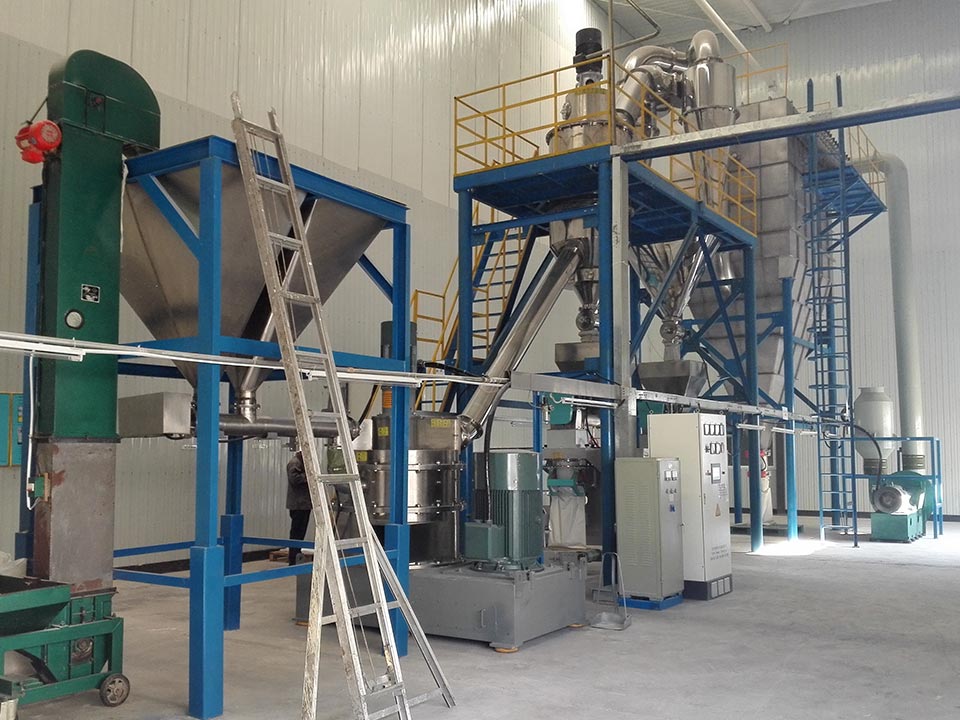
The impact mill must be fixed in cement. If the workplace is frequently changed, the shredder and the motor need to be installed on a base made of angle iron, and the power of the two should match. In other words, the power of the diesel engine is slightly greater than that of the shredder, and the grooves of the two pulleys are matched, and the outer ends of the pulleys must be on the same plane. Before operating the pulverizer, please turn the rotor by hand to ensure that the claws, hammers and rotor are flexible and reliable, and check whether there is any collision in the shell. The direction of rotation of the rotor is the same as the arrow of the machine, and the motor and grinder are well lubricated. During the work, please always pay attention to the operation of the crusher and supply materials evenly to avoid blocking the car and prevent long-term overload. If there is vibration, noise, bearing, gas temperature is too high, outward spraying, etc., stop the inspection immediately and continue working after troubleshooting.
Impact mill is a common type of mechanical equipment in the market, and is often used in enterprises. In addition to crushing some dry materials, the mechanical crusher also crushes some oily materials. The crushing of oily materials is still difficult, because as the fineness and temperature increase during the crushing process, the liquid content in the material will continue to increase. Excessive moisture will cause the filter screen to be blocked, and the material cannot be discharged smoothly.
Secondly, choose according to the size of the material that the customer wants to crush. If you only need to pulverize the powder to 20-120 mesh, you can control it through a screen. If you need to crush the material to 80-10000 mesh, use the winnowing type. Choose according to production capacity: The general configuration and description of the crusher have production capacity: kg/hour. Customers should choose the model size according to actual needs. The finer the fineness of the same machine, the lower the output, and the thicker the fineness, the higher the output.
Application field of jet mill
Jet mills are widely used in chemical, mining, abrasives, refractory materials, battery materials, metallurgy, building materials, pharmaceuticals, ceramics, food, pesticides, feed, new materials, environmental protection and other industries and the ultra-fine grinding and dispersing of various dry materials And particle shaping, it has a wide range of uses.
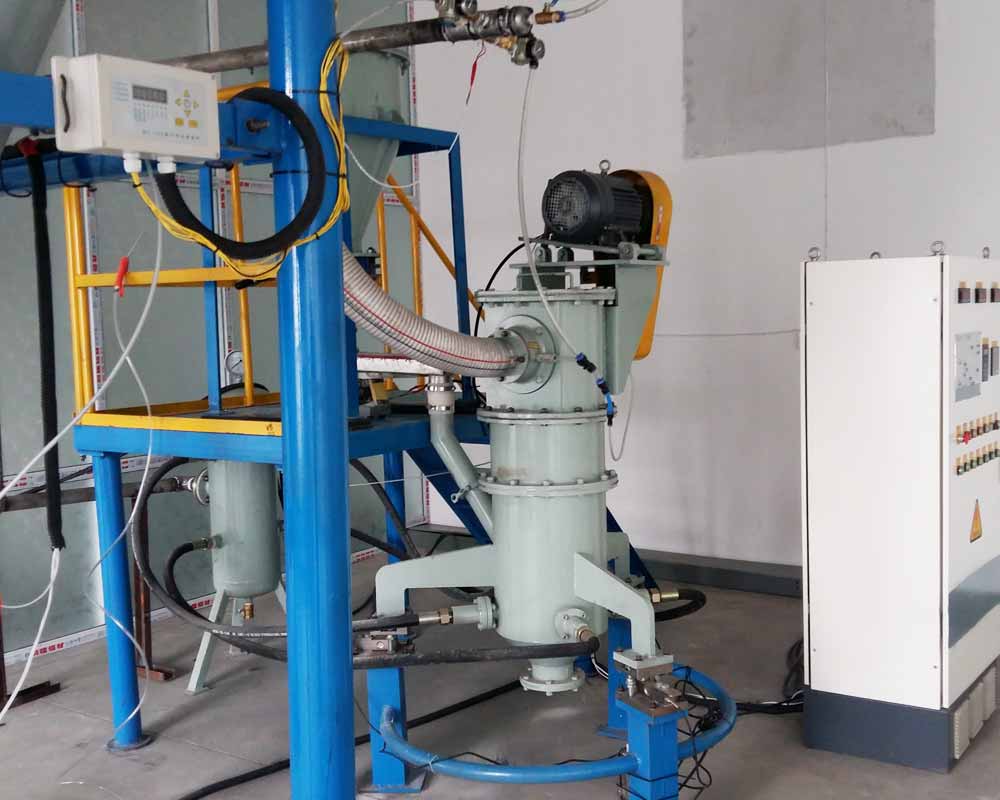
1. Chemical industry:
(1) The ultra-fine catalyst can increase the oil cracking rate by 1 to 5 times;
(2) Chemical fiber, textile, increase smoothness (addition of titanium oxide, silicon oxide);
(3) Rubber, strengthening, lightening, anti-aging (calcium carbonate, titanium oxide);
(4) Coatings, dyes, high adhesion, high performance;
(5) Daily chemical industry, cosmetics, toothpaste, etc.
2. Biology and medicine:
(1) Submicron and nano injections;
(2) Drug refining and enhanced absorption rate (superfine calcium);
(3) Health care products are refined to increase the absorption rate;
3. Military, aviation, electronics, aerospace and other fields:
(1) Super hard, impact-resistant materials, ceramic powder, hard plastics (light weight);
(2) Ultra-fine silicon oxide, high-performance resistance material;
(3) Ultrafine iron oxide powder, high-performance magnetic material;
(4) Ultra-fine oxidizers and explosives, the burning rate is increased by 1 to 10 times;
(5) Superfine graphite, high-performance picture tube and electronic countermeasure materials.
4. Food processing industry:
(1) Fiber food rations, wheat bran, oat hulls, corn germ residue, soybean hulls, rice bran, sugar beet residue and bagasse. After the compressed air of the fluidized bed pulverizer is frozen, filtered and dried, it forms a supersonic airflow through the nozzles and is injected into the pulverizing chamber to fluidize the material. The accelerated material merges at the intersection of the jet airflows of several nozzles, resulting in violent The collision, friction and shearing of the particles can achieve ultra-fine grinding of the particles. The ground material is transported to the impeller classification area by the rising airflow. Under the action of the centrifugal force of the classification wheel and the suction force of the fan, the coarse and fine powder are separated. The coarse powder returns to the crushing chamber according to its own gravity and continues to be crushed. The airflow enters the cyclone collector, the fine dust is collected by the bag filter, and the purified gas is discharged by the induced draft fan.
(2) Micropowders such as calcium supplement foods, animal bones, shells, skins, etc. are easier to be absorbed and utilized by the human body than inorganic calcium;
(3) Chitin, crab shells, shrimp shells, maggots, pupae and other ultra-fine powders. The all-ceramic mechanical crusher is a combination of similar crusher technologies at home and abroad, and has the advantages of impact crushing and hammer crushing. The new type of fine crushing and coarse grinding products developed by optimizing the main technical parameters have the characteristics of large crushing ratio, low energy consumption, stable operation, simple structure, and convenient operation and maintenance. The jet mill is a truly multi-purpose, high-efficiency, low-cost new type of grinding equipment.
(4) Soft drinks can be processed by adopting airflow micro-pulverization technology. It can develop soft drinks such as powdered tea, soybean solid beverages, superfine bone meal, and prepare calcium-rich beverages and instant mung bean flavors.

